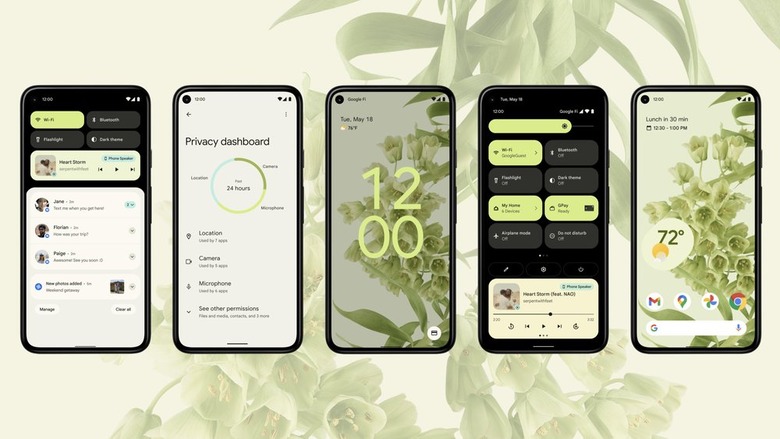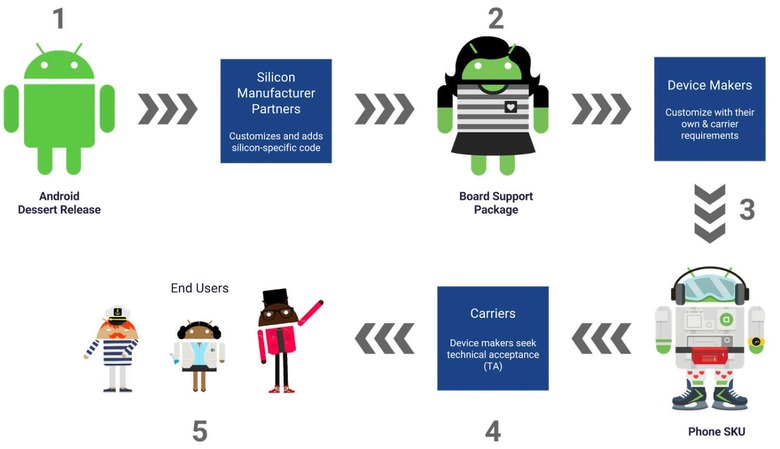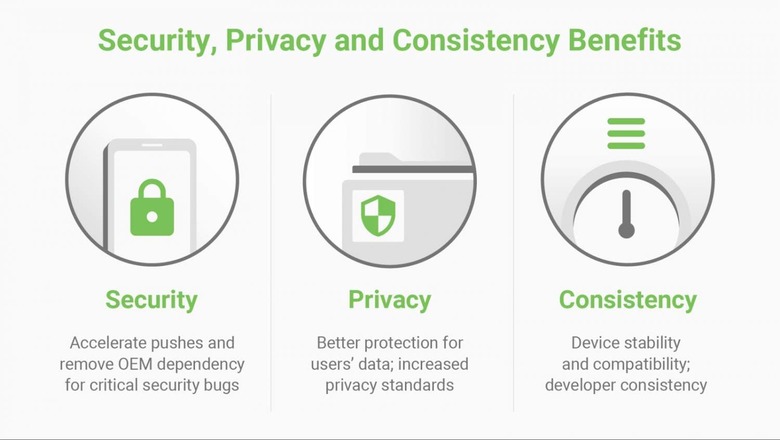Timely Android Upgrades Are Even More Critical Today - Here's Why
Samsung's bold promise last year to provide three years of Android upgrades was warmly received. In contrast, OnePlus' revelation that its Nord series phones are only getting one year's worth was heavily criticized. Fragmentation has always been a problem on Android, but it was something only advanced users and developers used to worry about. These days, however, even regular consumers have become more discerning about what Android version their phones are running and when they will get the next update. As a result, manufacturers, especially the big ones, have to step up their Android upgrade game because of user demand and because it has never been more important to deliver the latest version of Android to everyone as soon as possible.
Android upgrades and security updates
The rather sorry state of software updates on Android really came to light in 2015 with the disclosure of the Stagefright bug. It highlighted how manufacturers and Google itself were ill-equipped to handle fast releases of security patches and bug fixes. A lot has changed in the Android landscape since then, with Google's monthly Android security bulletins and similar monthly releases from some manufacturers. Unfortunately, that's no longer enough.

There are two kinds of software updates in Android, matching most release strategies in other major pieces of software, like Apple's iOS and macOS. First, there are minor maintenance updates that have adopted a monthly cadence, at least as far as Google is concerned. Those include patches to plug up security holes and fixes to some bugs that can be addressed without significant changes to the underlying platform.
And then there are the major Android upgrades released every year, the ones that used to have dessert nicknames. These bring more substantial changes to the operating system, even if users don't always notice it. While Google has more or less released a new Android version every year like clockwork, it has always been a guessing game for owners of devices made by other companies, and that has to change for the better quickly.
Under the hood
Every new Android version has brought visible changes to the user experience, but not all of them have completely revamped the UI as others. Android 9 Pie, for example, introduced the gesture-based navigation system that moved away from the years-old three-button system, and subsequent releases only refined the implementation without breaking compatibility. Android 5.0 Lollipop introduced Material Design in 2014, which only got minor improvements over the years. Android 12 will be making the first big leap since then with Material Design 2.0, a.k.a. "Material You," later this year.
That said, every Android release always brings significant changes under the hood, even if they don't break backward compatibility. Old systems are changed or removed while new ones are put in place. All of these are intended to adapt Android to the latest trends and needs in the mobile market.
The permissions system is probably one of the biggest examples of important changes to Android's foundations. Almost every new version fine-tunes Android's permissions, giving users more power to protect their privacy and limiting the damage that malicious apps might be able to do. These changes are often implemented in response to the times, and the times are changing faster than ever before.

Patches are not enough
Google releases security fixes every month, and, thankfully, some manufacturers are trying to keep up. Those patches, however, only address problems that can or need to be fixed quickly without massive changes to Android's code. Unfortunately, not all bugs are like that.
There will always be bugs that require significant changes to the platform that could break things if not implemented properly. Although Google tries as much to preserve compatibility with older Android versions, a new release is an opportunity to introduce a new solution. Until users receive this particular Android upgrade, they remain vulnerable to whatever security holes the older versions have open.
There are also outdated features or concepts that can only be replaced with a more pervasive and invasive release. Changes to the permissions system, multimedia frameworks, and even the software upgrade system itself require heavier changes to the operating system that can't be delivered quickly to phones in monthly patches. While it's understandable that it takes time to test and roll out these massive changes, manufacturers and carriers sadly take too much time to do so.
It's complicated
The speed of adoption of new Android releases is always compared to that of iOS. In an ideal world, Android upgrades would happen like iOS, rolling out almost immediately to compatible devices with only a few weeks' delay at most. For better or worse, Android operates in a completely different world, and things work differently there.
Android's journey begins at Google, but there are so many players involved that the pipeline can stall at any time and at any given point. A lot of the blame is laid on manufacturers and carriers, but even chipset makers like Qualcomm and MediaTek also play a role in the development, testing, certification, and distribution of a new Android release.

Android is nearly 13 years old, and, unfortunately, it hasn't solved that problem completely just yet. Google has been working on new systems to improve that situation, but, unfortunately, it's still far from the ideal.
The need for speed
This fragmentation isn't just egg on Android users' faces; it also leaves them vulnerable to security flaws and bugs that can't be fixed with small patches. More than not having the latest features and shiniest new UIs, it also means they aren't getting the most optimized version of an operating system for today's devices.
A lot of emphasis has been given to privacy these days and, on mobile, that is often exposed through permissions and other privacy-related frameworks, like indicators when a camera or GPS is being used. Security trends and practices are changing faster than ever today, and Android needs to keep up with those to better protect users. Unfortunately, that agility becomes moot if users are left running versions of Android from 2019 or earlier.
Android upgrades also bring performance improvements, not just from Android itself. More often than not, new releases also include updates from component makers that fix bugs and improve the operation of the hardware. Until users get these upgrades, they won't be getting the most out of their phones and tablets, at least as far as the latest capabilities that are enabled by their manufacturers.
Light at the end of the tunnel
Fortunately, Google is well aware of this problem and has been working to fix that situation, at least from its end. Efforts like Project Treble and Project Mainline try to make the process easier by splitting up the pieces of the platform or relocating them where it would be easier to push major updates without having to wait for a new Android version. Unfortunately, these efforts don't seem to be progressing at a fast rate, even if Project Treble has been a requirement for new Android phones for years now.

Part of the problem still lies on the other points along the way, namely with manufacturers and carriers. All the improvements that Google tries to make from the platform side won't help if OEMs and network operators don't improve their own processes. Even with Treble and Mainline, the bottlenecks remain the same as before.
Final Thoughts
Many consumers and businesses avoid Android because of the platform's inconsistency and fragmentation when it comes to software versions and upgrades. Some manufacturers actually take advantage of that by doing their own thing and making their own set of commitments, but only for a small selection of their phones. Even within the same brand, lower-tier phones get a different treatment when it comes to upgrades, simply because they are not a priority.
This situation has to change soon, and not because it's getting embarrassing. The number of Android devices in the market isn't going to decrease any time soon, and it will get worse if left unhandled. Consumers need to be more discerning and more vocal about their demand for faster and more regular Android upgrades, even for mid-range or entry-level phones. And then, perhaps, we can start dreaming about phones that get Android upgrades for five years.
